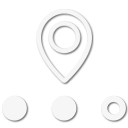
Enthusiast I
I was originally going to reply to a post but felt this was a good opportunity to start a thread to provide some solid info on medical equipment.
So if I may start on the hemostatic (blood clotter) discussion and hopefully provide some clarity. Hemostatic agents such as your quick clot, celox etc, all work by very different mechanisms. All of which are not created equal. The budget constraint thoughts are valid for something you may not use everyday however, please do your research before purchasing.
QuikClot is arguably the most prevalent hemostatic agent available, and with that comes some blind attraction to it. I’m 100% a proponent of it, and have used it many times. With that it has taken a long time to understand the differences in mechanical and chemical means of bleeding control. A wound that requires packing (typically a site that doesn’t work with a tourniquet, base of neck, groin or armpit) are the ones that are best treated by wound packing. The skill of packing far outweighs the piece of kit you carry. Any hemostatic no matter how Gucci will not overcome inadequate technique. Hemostatic agents provide a chemical adjunct to your mechanical “packing of the wound”’ultimately you are trying to pack the wound bowl tightly to compress the vessel that has been interrupted. The chemical piece simply helps to promote the clot once it comes into contact with the interrupted vessel or immediate area around it. QuikClot works by pulling plasma (fluid) into the gauze allowing for better concentration of blood cells and clotting components. It then activates factor 12 on the intrinsic side of the cascade (nerd stuff). Take away from it is it’s not perfect, and WILL NOT work on people that are on anticoagulants.
Celox and some of the other products are a mucoadhesive that work independent of the clotting cascade and will work better on patients that are anticoagulated.
Long and short of it is. If you commit to buying a piece of kit especially medical know how to use it!! Hemostatics are a great tool if you know how it works and how to wound pack.
I guess I’m using this to open a discussion on medical kit and training, and happy to answer any other questions around that topic. My background is in military/austere medicine as well as flight and enroute Care. Hopefully I can help guide some people!
So if I may start on the hemostatic (blood clotter) discussion and hopefully provide some clarity. Hemostatic agents such as your quick clot, celox etc, all work by very different mechanisms. All of which are not created equal. The budget constraint thoughts are valid for something you may not use everyday however, please do your research before purchasing.
QuikClot is arguably the most prevalent hemostatic agent available, and with that comes some blind attraction to it. I’m 100% a proponent of it, and have used it many times. With that it has taken a long time to understand the differences in mechanical and chemical means of bleeding control. A wound that requires packing (typically a site that doesn’t work with a tourniquet, base of neck, groin or armpit) are the ones that are best treated by wound packing. The skill of packing far outweighs the piece of kit you carry. Any hemostatic no matter how Gucci will not overcome inadequate technique. Hemostatic agents provide a chemical adjunct to your mechanical “packing of the wound”’ultimately you are trying to pack the wound bowl tightly to compress the vessel that has been interrupted. The chemical piece simply helps to promote the clot once it comes into contact with the interrupted vessel or immediate area around it. QuikClot works by pulling plasma (fluid) into the gauze allowing for better concentration of blood cells and clotting components. It then activates factor 12 on the intrinsic side of the cascade (nerd stuff). Take away from it is it’s not perfect, and WILL NOT work on people that are on anticoagulants.
Celox and some of the other products are a mucoadhesive that work independent of the clotting cascade and will work better on patients that are anticoagulated.
Long and short of it is. If you commit to buying a piece of kit especially medical know how to use it!! Hemostatics are a great tool if you know how it works and how to wound pack.
I guess I’m using this to open a discussion on medical kit and training, and happy to answer any other questions around that topic. My background is in military/austere medicine as well as flight and enroute Care. Hopefully I can help guide some people!









